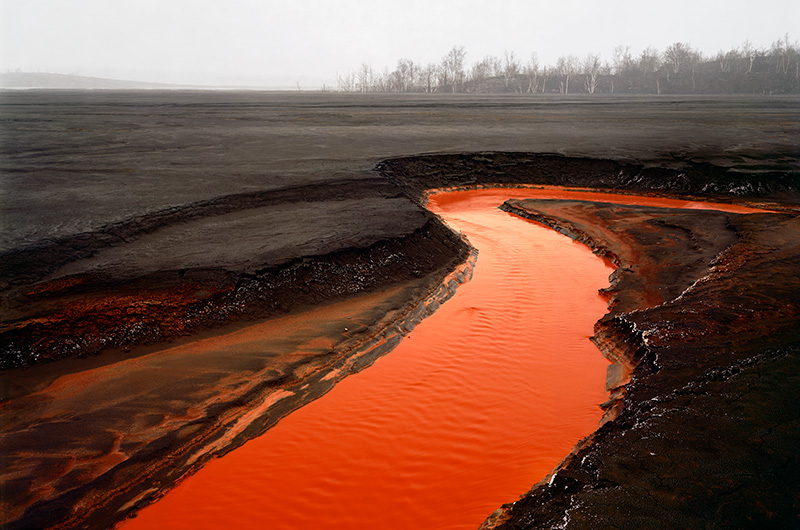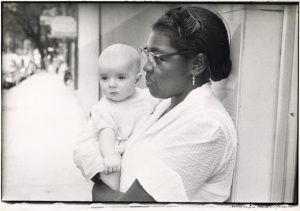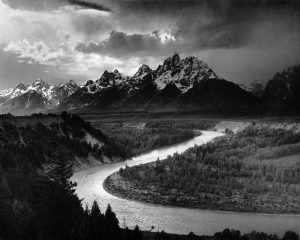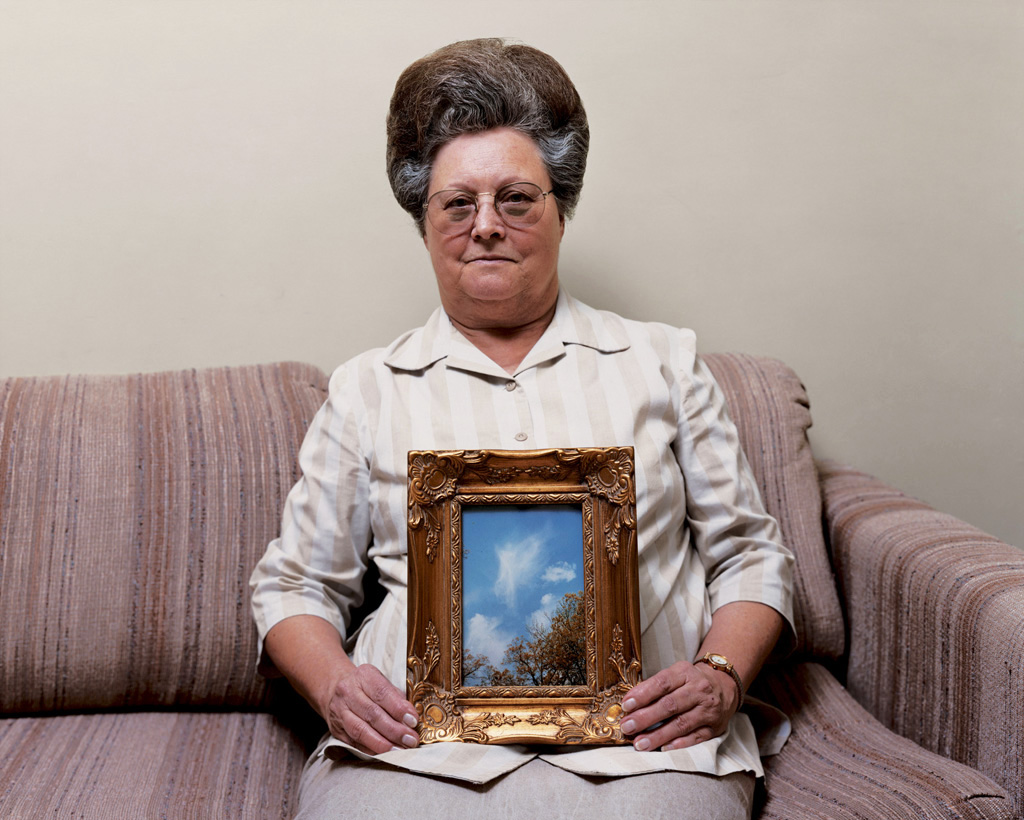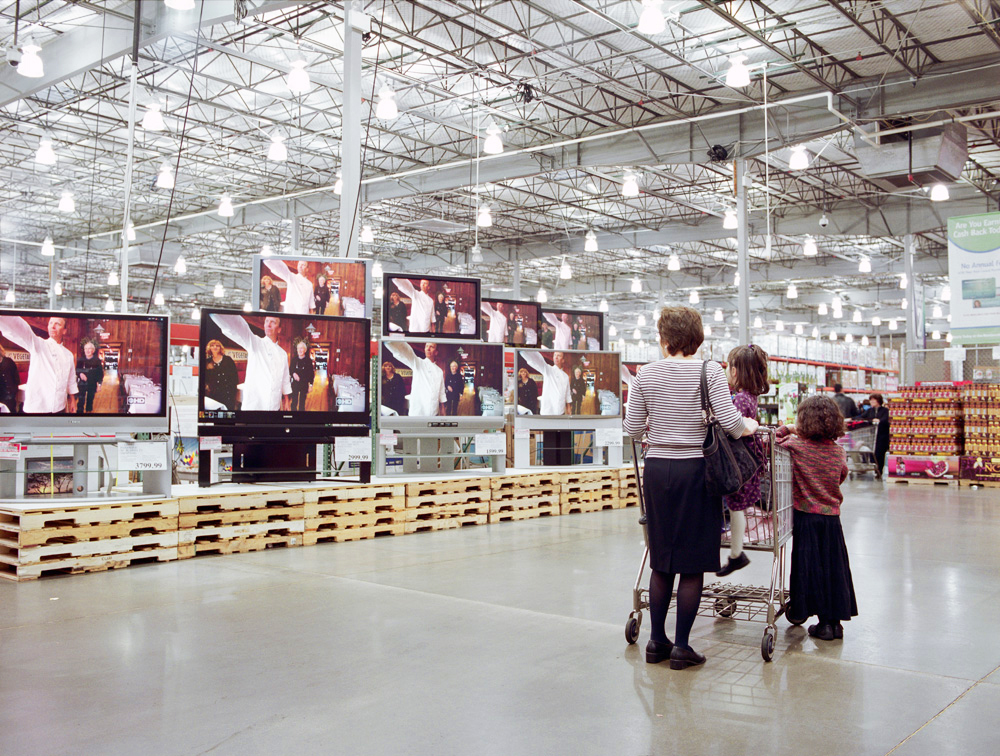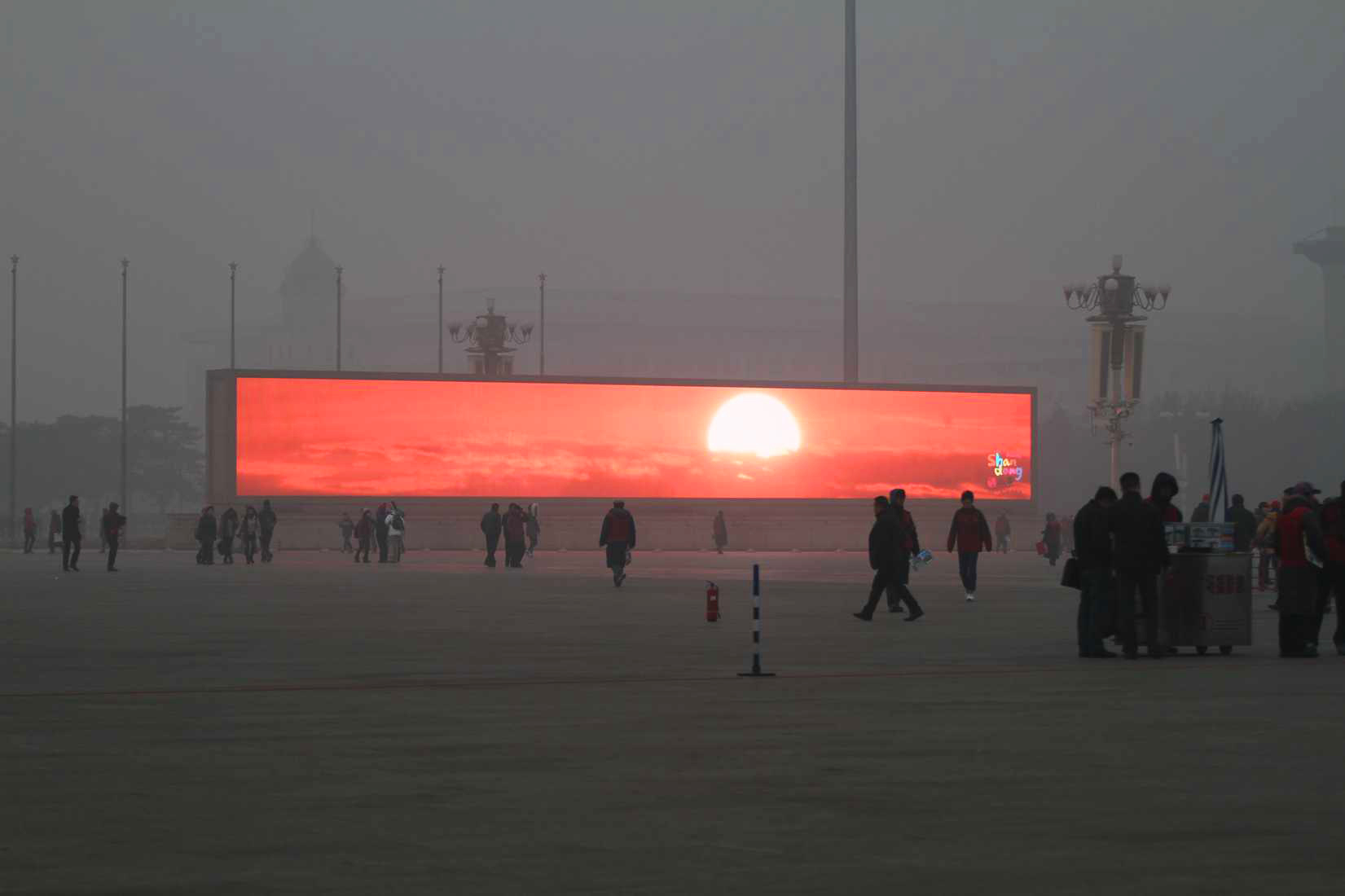
A video monitor shows the rising sun in Tiananmen Square on January 16, 2014, offering Bejing residents contact with “nature” through the thick air pollution. Credit: ChinaFotoPress
We have yet to hear from the President-Elect’s team about their policies on honoring and supporting the arts to help insure a free and healthy society.
We can look for inspiration to former US President, John F. Kennedy, for whom truth and art mattered deeply. Indeed, for JFK they formed the very basis of a healthy civilization. Though as a child I did not realize the full import of his speeches, the President’s words nevertheless instilled in me a deep respect for others, a genuine love of our country’s potential, and an unwavering affinity for the arts and culture.
“The life of the arts, far from being an interruption, a distraction, in the life of the nation, is close to the center of a nation’s purpose — and is a test to the quality of a nation’s civilization.”
On October 26, 1963, at Amherst College, Kennedy delivered a powerful, ennobling speech as a eulogy for the poet Robert Frost on the role of the artist in society.
“The artist, however faithful to his personal vision of reality, becomes the last champion of the individual mind and sensibility against an intrusive society and an officious state. The great artist is thus a solitary figure. He has … a lover’s quarrel with the world. In pursuing his perceptions of reality, he must often sail against the currents of his time. This is not a popular role. … Yet in retrospect, we see how the artist’s fidelity has strengthened the fiber of our national life.
If sometimes our great artists have been the most critical of our society, it is because their sensitivity and their concern for justice, which must motivate any true artist, makes him aware that our Nation fails short of its highest potential. I see little of more importance to the future of our country and our civilization than full recognition of the place of the artist.
We must never forget that art is not a form of propaganda; it is a form of truth.”
Kennedy also offered guidance for moving forward in times of unrest. In our current age, as we face radical divisiveness and extreme partisanship, a greater opportunity arises for active listening and productive dialogue. He said: “The Chinese use two brush strokes to write the word ‘crisis.’ One brush stroke stands for danger; the other for opportunity. In a crisis, be aware of the danger — but recognize the opportunity.”
If our society is to heal and find common ground for growth and evolution towards the future, the arts can and must play a central role.
Photography is the great democratic medium of the twenty-first century and a powerful form of visual expression, available to everyone.
Photographer as Witness
Right now, each of you is likely to have a highly advanced camera in your pocket, capable of making vibrant, technically-excellent photographs of anything that ignites your interest in everyday life. Making a photograph is a gesture of a simple truth: that I was here, I witnessed this event, and experienced this moment in time.
What we choose to pay attention to reflects our values and our viewpoint, and it forms the very foundation of our creative expression. Our observations are filtered through our minds and hearts, but also through the lens for posterity. Picasso has said that art is a lie that tells the truth. Which moments reveal larger truths? Which moments extend beyond themselves and are reflective of deeper meaning? While the aims and goals of pure documentary photography and photojournalism have been criticized for conscious or unconscious bias on the part of the artist, there has nevertheless been ample evidence in the history of photography that photographs can make a difference: effect positive social change, bring awareness to issues that define a time or place, and offer inspiration as well as evidence of injustice and oppression.
Between 1908 and 1913, photographer Lewis Hine documented the inhumane practices of child labor in factories and cotton mills in the US. Often threatened with violence and even death, he gained entrance to the factories surreptitiously and photographed the hidden, immoral practice of children as young as 8 or 10 years old working long hours in unsafe conditions. His photographs were used as evidence and propaganda by the newly formed National Child Labor Committee and, by 1916, Congress passed the Keating-Owens Act strongly regulating the treatment of children in the workforce.
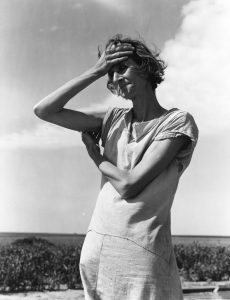
The wife of a migratory laborer in Texas during the Depression. (Photo by Dorothea Lange/Library of Congress)
Later, the Farm Security Administration (FSA) was formed to help combat rural poverty. A division of FDR’s New Deal program designed to provide relief from the Depression for American workers, the FSA is best known today for its highly influential photography program. The FSA photography team initially sought visual evidence of the need for government support of rural citizens but rapidly expanded to document the post-Depression American way of life. Numerous highly talented and well-known photographers, such as Dorothea Lange, Walker Evans, and Marion Post Wolcott, were employed to travel the nooks and crannies of America and chronicle both poverty and the tenor of the times. The project resulted in one of the most extensive documentary photographic archives ever produced, numbering over 80,000 images housed in the Library of Congress. The images made a persuasive case by stressing the suffering experienced by many during the Depression, the inherent dignity of our shared human condition, and the need for large-scale relief efforts.
By 1936, the popular Life Magazine was rebranded as a weekly news magazine with a special emphasis on in-depth photojournalism. The picture era was dramatically ushered in and Life magazine dominated the news market for over 40 years. At its height, Life sold more than 13.5 million copies a week. Prior to the advent of television, it became the primary means for Americans to receive the news in pictures, covering world and national events, the battles of WWII, and the rebuilding of American society in the post-war era, Life enjoyed remarkable success and its influence on American life cannot be overstated.
The pages of Life included the heroism of sacrifice, the blood and guts of battle, the birth of scientific discovery, the gaining momentum of the civil rights movement, the personal attainment of artists and cultural icons, the memoirs of world leaders including President Harry Truman, commissioned literature from authors like Ernest Hemingway, and countless stories chronicling the dignity and struggles of everyday people from around the globe. And all were accompanied by pictures. Show, don’t tell, became the mantra for a new era that reverberates to the present-day.
A special phrase was even coined during that era to give a name to the unique nature of mid-century photojournalism: the concerned photographer.
A frequent contributor to Life Magazine, photojournalist W. Eugene Smith brought an intense dedication to human rights through his uncompromising vision and integrity. Through his mastery of a relatively new form of presentation — the photo essay — Smith became known for long-form journalism with a camera. One of his best-known essays, published in book form, focused on the small fishing town of Minimata in Japan where an entire generation of residents suffered mercury poisoning from effluents dumped in the Bay by the Chisso chemical company. Smith was twice beaten by company bodyguards sustaining injuries that damaged his health and resulted in limited vision in one eye.
Due to the public awareness generated by the worldwide distribution of the Minimata book, the Japanese government forced Chisso to clean up the Bay and eventually pay over $86 million in damages to over 10,000 individuals.
Today, many photojournalists and documentary photographers continue to bear witness, showing us what needs to be changed, highlighting what is right with our world, and incisively commenting through their lived experience with a camera many incidents of injustice, abuse, environmental damage, affronts to civil rights, and the terrifying outcomes of war and violence. Several notable photographers spring to mind, and there are many others.
Photojournalist Lynsey Addario is known for her brave and insightful coverage of the war in Afghanistan and Iraq, conditions in Cuba, and conflict in Africa. A Macarthur Grant recipient and author of the successful memoir, It’s What I Do: A Photographer’s Life of Love and War, Addario has focused her lens on women in oppressive societies, for example showing the experience of women that were rape victims during the war in Congo and victims of extreme discrimination in Saudi Arabia society.
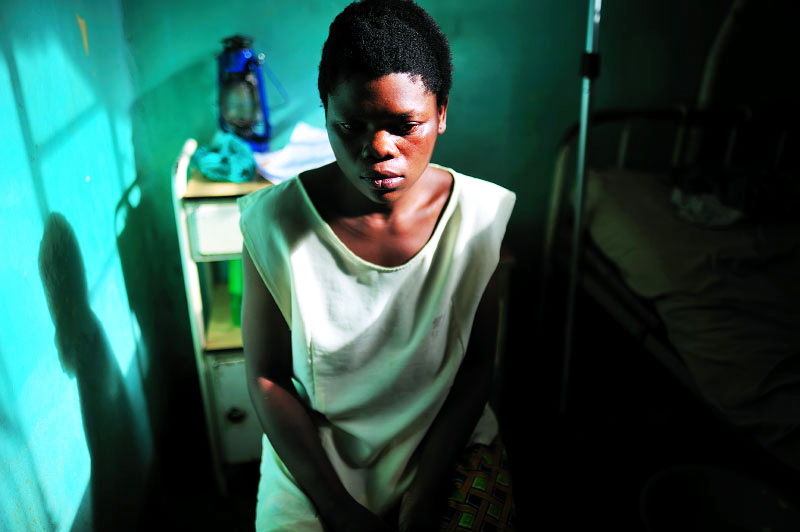
Chibalonza, 26, sits in the hospital in Walungu, South Kivu, in Eastern Congo, April 14, 2008. Chibalonza was kidnapped by six men in uniforms and brought to the forest for nine months, where she was raped repeatedly. (Credit: Lynsey Addario)
A resident of Toronto Canada and born in the Ukraine, Edward Burtynsky is known as an artist who photographs “nature transformed through industry.” His disturbing works reflect the radical transformation of nature through human conquest. He writes, “These images are meant as metaphors to the dilemma of our modern existence; they search for a dialogue between attraction and repulsion, seduction and fear. We are drawn by desire — a chance at good living, yet we are consciously or unconsciously aware that the world is suffering for our success.”
Photograph as Mirror
For a society to be healthy, it needs frequent and powerful checks and balances. Artists and photographers often assume a role of social activism, showing a society to itself through carefully chosen images and projects that are designed to both inform and challenge.
The singular project — book and multiple exhibitions — that continues to have a widespread and lasting influence over 60 years from its inception is The Americans by Robert Frank. As a young Swiss-born photographer, Frank applied for a Guggenheim grant in which he sought no less than to “document a civilization,” meaning his adopted home of the USA.
He spent two years (1953-55) traveling the country in an extended road trip, attempting to subvert the romantic vision of America heralded by mom, apple pie, and purple mountain majesty as seen in many magazines in the 50’s. His contrasty, grainy black and white images became an indictment of the American Dream, reflecting the ever-present tensions of race, class, and inequality that he found as a systemic feature of the country.
Curator Sarah Greenough writes of The Americans: “A man of great, if quiet ambition, Robert Frank returned to the United States in 1953 and embarked upon a project with epic proportions and far-ranging consequences. The resulting publication, The Americans, was — and continues to be — a startling revelation. At a time when this country promoted a wholesale and unambiguous image of itself, Frank looked beneath the surface, scrutinizing the culture with honest but passionate vision to reveal a profound sense of alienation, angst, and loneliness.”
He tried and generally succeeded in telling the truth with a camera. To this day, and perhaps more than any other artist, Frank has had an outsized influence on generations of photographers. Much can be learned today by looking at and contemplating the work (Artsy.net has a comprehensive Robert Frank resource). It becomes a visual poem about America with sequential linkings of images that astonish and teach us about ourselves. He showed America to itself.
I cannot write about documentary photography without including another photographer with an enormous legacy, Ansel Adams. A landscape photographer whose best-known images were made between the 1940’s and 60’s, Adams inspired us to care for nature, to understand the powerful integrity of natural law, and acknowledge the vanishing state of untrammeled nature. As a member of the Board of Directors of the Sierra Club for 37 years and a recipient the Presidential Medal of Freedom, he was a staunch environmentalist. Ansel Adams attempted to bring awareness of the growing plight of the “natural scene” as he called it, to a widespread audience. His personal integrity and images helped develop the citizen’s environmental movement.
Over the past 50 years, the aims of documentary photography have been scrutinized and questioned. Most believe that photographers or journalists cannot make claims of truth or objectivity since all experience and commentary is inherently biased and subjective. However, this stance does not exclude the necessity of authenticity. We can be honest. What is true to our experience of the world? We may not be able to be fully impartial, but we can be empathetic and compassionate, and recognize the realities of others. Much documentary photography today is known as New Documentary and is built upon subjective experience and deeply colored by irony.
A prominent new-generation documentary photographer, Alec Soth, powerfully straddles the fine line between humanism, respect, satire, and irony. His first book, Sleeping by the Mississippi offers intimate glances into the oddities of the private lives of people and peels back strange and surreal moments of folklore from residents who surround the river.
The platform of much contemporary socially-based art is not humanism, but irony. As clever and compelling ironic humor can be in photography, it often bespeaks a sense of moral superiority. We are subtly looking down upon members of society, entire social classes, and groups of people. Donald Trump’s success at the polls, that took many by surprise, was partly the result of the liberal educated elite not understanding the plight and the very real disenfranchisement of the working class.
Fine art photographer Brian Ulrich (no relation) has explored the conspicuous consumption of middle-class America through several series of photographs that ask big questions and help his audience confront alarming and indisputable facts. Americans constitute only 5% of the world’s population but use 25% of the world’s total energy. One American consumes twice the energy of a Japanese or UK citizen, 31 times more than an Indian, and 370 times more than an Ethiopian. We are highly privileged. I, for one, think about this now every time I am faced with updating my electronic devices or getting on a high-pollutant fuel burning airplane. Taking this to the next step, our new administration threatens to dismantle the trade agreements that will make us good global citizens and help give people in other countries their chance for a respectable existence. Where is our collective conscience? Are we willing to sacrifice any of our excessive consumption for other countries — or even for our own working class — to develop? The world’s resources are finite. Will continued entitlement make America great again? At whose cost?
We need, I think, a return to a deep humanistic perspective unafraid of being critical yet infused with a deep sense of equality and respect of those toward whom we point our camera. In my mind, a more effective artistic strategy than irony is paradox — that everything contains contradiction and encloses multiple angles with many dimensions and shades of meaning. This and that. One of my teachers would often ask the question: And what else?
What Now?
The concept of show, don’t tell, can be a powerful force for the good. I had the opportunity two decades ago to work on a community project with large social ramifications. I was commissioned with two other photographers and an archaeologist/guide to document the island of Kaho‘olawe, smallest of the eight principal Hawaiian islands for a book and traveling exhibition.
Kaho‘olawe is sacred to the Hawaiian people, containing over 2000 intact archaeological sites, and was deployed by the US military from 1941 to 1991 as an ordnance training range. Tens of thousands of shells and other explosives, weighing up to 500 pounds each, were detonated on the island, and in the surrounding waters.
We were asked only to experience the island, spend time within its shores, explore its different sides, and to generate visual images in accord with our own observations. We were given a rare opportunity — and a great responsibility. For the entire photographic team, the project proceeded as a collaborative effort involving many members of our island community and assumed the character of a profound learning experience.
Soon after the bombing ceased, Congress appropriated over 400 million dollars to clean up the island and a grass-roots effort continues to this day to heal the wounds of military arrogation. Our exhibition traveled widely and closed at the Smithsonian in 2002. Over 350,000 people saw the exhibition. For many, it represented a symbol of how we treat the earth worldwide.

Imitation Silkworm missiles for jet fighters to practice bombing during the Gulf War. Kaho‘olawe, HI, by David Ulrich
Thanks to social media, we can all make a difference. Instagram, Facebook, and Snapchat are, above all, publishing platforms. Our visual messages can be disseminated to wide audiences — instantly. A casual review of these platforms reveal that most people employ the power of global publishing merely to chronicle their selfies, meals, travels, and moments with friends. Well and good; much value comes of this in terms of staying in touch with friends. However, think of the groundswell of diverse voices that could unite around humanistic and socially conscious imagery. Photographers will still make books, have exhibitions, and work on long-term projects that inflame their passion, but now all of us can participate in making images with a wide audience that can help propel positive social change.
Rebecca Solnit recently wrote, “Originality is partly a matter of having your own influences.” We have a glorious and instructive past full of interesting writers, artists, photographers, and thinkers who all, in their own way, bore witness to the world, to people, and their comings and goings, their justices and injustices. Study them. Learn from them. Find your own path of authentic expression.
Many avenues are open. Make portraits of people in your neighborhoods and communities. Show them respect and appreciation and offer them dignity by the empowering act of collaborating to take their picture. Take portraits of those who will be most affected — like the elderly, the disabled, and the unemployed—by the potential dismantling of Medicare and the Affordable Care Act. Make photographs that reflect the normality and many contributions of recent immigrants including the law-abiding majority of Mexicans and Muslim-Americans.
Chronicle climate change and environmental degradation in your own communities and your home cities and states. Climate threat is not an abstract concept; it can be seen, felt, and perceived directly. Anyone who has lived for decades in a place has their stories to tell about a changing planet. Don’t let these stories go untold. Sing an ode to the earth—in both your visual expression and your deeds. Show us the beauty and viability of sustainability, not as a concept but as a direct, visible action. Show us the horrifying and catastrophic effects of a century of oil dependence. Don’t let our world leaders off the hook. Make this into a movement. If each of us made images every day of our suffering planet as much as we do selfies, think of the influence this might have. Show, don’t tell, about the dignity and equality of all people, regardless of race or national origin. Do not let the spirit of America and her people be tarnished by partisanship.
Express your moral outrage about societal conditions that conflagrate in your gut with visual activism. Show — don’t just tell of — the widening gap between the 1% and the rest of the global population. Be a visual poet and inspire us with images of the poignant radiance of our only planet and its diverse inhabitants. Show us your inward glances into shadow or fear and the brightness of your realization. Teach us with images, no matter how unseemly or scary, of your struggles towards growth and personal evolution. Enlighten us with pictures that reflect your earned identity and your proud heritage. Make it real. Make it true. Help us embrace the deep paradox of being human. Help our still-great society engender empathy and compassion as our true guiding lights.
Art stands among the most civil and effective forms of discourse.

